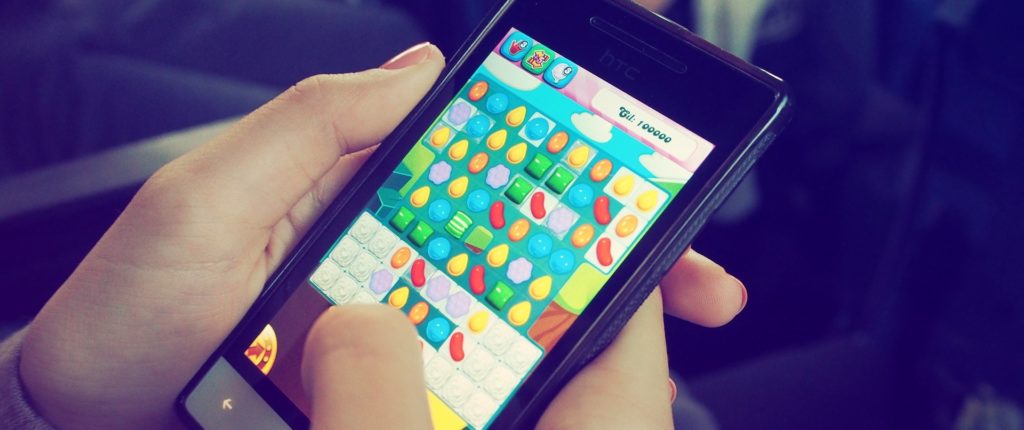What your Smartphone Use Might be Saying About You
Smartphone Behaviors and the Psychological Problem they are Most Associated With
Sometimes the literature on the subject of social media, the Internet and smartphones tends to address each of these things as a single problematic entity. You’ve probably heard warnings about “smartphone addiction” or “social media obsession” more than once from the news media, from your grandmother, etc. However, the Internet and the smartphone are just channels through which we access a world of countless websites, activities and applications. Many of the things we do on our devices are harmless and many are even beneficial, helping us to create and maintain relationships, navigate our world and easily accomplish routine tasks that once used to be a hassle.
That being said, there are also quite a few negative consequences and/or problematic personality traits associated with certain online behaviors. Below you will find a collection of some of the most common activities people engage in on their smartphones and what psychological problem is most commonly associated with that activity in the academic literature.
Before reading ahead, take a moment to reflect – what do you find yourself doing most often on your phone? Do you think it affects your psychological well-being in any way?
 Facebook: FOMO
Facebook: FOMO
Fear of Missing Out, or FOMO, is defined as “the fears, worries, and anxieties people may have in relation to being in (or out of) touch with the events, experiences, and conversations happening across their extended social circles” (Przybylski et al., 2013). In other words it means being afraid that other people are having more fun than you and that you’re missing out on something cool like an epic music festival or a mind-blowing taco experience. FOMO can occur because of the non-representative posting behaviors people often engage in online.
We post photos only from the highlights of our lives (which represent a small percent of all our experiences), leaving out the boring and unpleasant aspects that often make up the majority of our daily routines. Nobody instagrams themselves mopping up spilled beer at work or watching 3 straight hours of Britain’s Got Talent. This unbalanced posting leads to social media viewers receiving a misleading perception of their peers’ lives, thereby leading them to feel dissatisfied with their own mundane-seeming existences which they see from the inside, negative aspects and all. FOMO has been significantly associated with depression, lower mindfulness (Baker, et al., 2016), lower levels of mood and lower overall levels of life satisfaction (Przybylski et al., 2013).
Twitter: Self-centeredness
In a study of 350 Twitter users, researchers found that 20% of the sample were informers, using the platform to share information about various topics that might be of interest to their followers, whereas a whopping 80% of the sample were meformers, talking about their own thoughts, feelings, achievements, etc. The tweets analyzed were separated into 9 categories (Information Sharing, Self Promotion, Opinions/Complaints, Statements and Random Thoughts, Me Now, Question to Followers, Presence Maintenance, Anecdote (me), Anecdote (others)), and meformers shared primarily “Me Now” posts (Naaman et al., 2010) such as “slaying in my new romper” or “speeding around on my new bike lol”.
The study also analyzed the follower engagement for informers vs meformers. They found that informers mentioned other users more frequently in their messages and that they have more friends and followers on Twitter than the meformers. This is likely due to the fact that informers aim to help and inform the community, often because they are promoting a product or service, thereby gaining followers, whereas meformers use the platform for personal use which means their followers are likely a smaller circle of personal contacts and friends.
Instagram: Narcissism
In a study of more than 16,000 college students, researchers found that students nowadays score significantly higher on the Narcissism Personality Inventory than they did just 20 years ago. Instagram and selfies have been partly blamed for this rising narcissism over the past few years. “Let me take a selfie” was not only the hook for the most bumpin (do the kids still say bumpin?) jam of 2014, it’s also the title of one of the most cited papers in the academic literature on social media (Barry et al., 2015). The study reported that vulnerable narcissism (the kind that involves self-esteem being dependent on the appraisal of others, hypervigilance about rejection from others, and a desire to distance oneself from others as a protection from possible threats to one’s ego) was positively correlated with posting selfies that highlighted one’s physical appearance (Barry et al., 2015). In 2 other side by side studies, researchers found that grandiose narcissism (the kind that involves willingness to exploit people to reach social goals, a desire to seem helpful to improve one’s image, and fantasies about one’s superiority) is related to taking and posting more selfies, feeling more positive emotions when taking selfies, and self-reported self-presentation motives (McCain et al., 2016). (Does that make Kim Kardashian grandiosely narcissistic or vulnerably narcissistic? A question for the ages.)
A third study found that individuals higher in narcissism post selfies, more profile picture updates, rate their profile pictures as more attractive, and spend more time on Instagram overall. They also found that Grandiose Exhibitionism was positively associated with higher frequency of selfie posting and Leadership/Authority was negatively associated with higher frequency selfie posting (Moon et al., 2016) which might explain why Jason Statham and Barack Obama have been posting a shortage of selfies on the gram these days.
Texting: Interpersonal stress
Texting is the most common activity conducted on the mobile phone (Poushter, 2016). Although voice calls are also highly common, texting is often preferred because it is more discreet, less complex in terms of communication cues, can be done with several people at once, and offers the texters more control over the flow and content of the conversation. Although texting can seem like the most convenient form of communication, research has shown that when it comes to relationship management and conflict resolution, it can actually lead to problems. One study found that although texting between friends can lead to satisfaction and a positive form of dependence, there can come a point where the dependence turns to overdependence and the pressure to respond to messages leads to a sense of entrapment and dissatisfaction with the friendship (Hall and Baym, 2011).
Another study argues that texting is a highly unsuitable mode of communication for managing interpersonal stress, perhaps because of texting’s increased potential for misunderstandings. The study found that high texters showed a negative association between interpersonal stress and emotional wellbeing that was not present for low texters (Murdock, 2012). Imagine how difficult it is to keep a “she said, he said” argument straight face-to-face, now throw in some furious typing, autocorrect, and confusing emojis in the mix. It’s a mess.
Mobile Games: Gambling
The pleasurable and reinforcing characteristics of Candy Crush and similar mobile games are reminiscent to those seen in gambling games that can lead to addiction. One of the culprits for this phenomenon are ludic loops. Ludic loops are tight, pleasurable feedback loops that stimulate repetitive and compulsive behavior (Heaven, 2014) and they are present in both slot machines and mobile games. Often times people find themselves playing slot machines as well as mobile games mindlessly for hours, because the rewarding sounds and visual effects that accompany small successes in the game are pleasurable and rewarding, and their repetitive and quick highly-stimulating nature gets people hooked.
Another similarity between Candy Crush and gambling is something called “near-miss outcomes.” This is when a player just misses getting a win or moving on to the next level. In slot machines this occurs when 2 out of the 3 symbols needed to win are the same, thereby making the player feel like they juuust missed a jackpot (they didn’t). Near-misses in gambling have been shown to encourage continued play despite the frustrating results. A recent study showed that near-misses in CandyCrush do the same thing (Larche et al., 2017). They encourage continued game play moreso than either wins or losses in the game and can keep players tapping and sliding for hours in a colorful CandyCrush craze (modern day tongue twister). Considering that CandyCrush and other mobile games have paid features that allow the player to continue the flow of the game without interruption, these seemingly innocent activities are becoming more and more similar to traditional gambling.
Who we are influences what we do and what we do affects who we are. Our behaviors on technology platforms are not immune to that. It’s therefore good to be aware of how we use our devices, what behaviors they facilitate and encourage, and what our tech use might say about our desires and personalities. The closer we analyze our actions and reactions and the more we understand what we do on our devices and why, the more control we’ll have over our behaviors (or the more eloquently we’ll be able to criticize our friends for texting at the dinner table).
What are your thoughts? Comment below.





Recent Comments